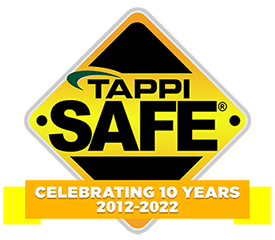 Search
Search
Use the search bar or filters below to find any TAPPI product or publication.
Filters
Content Type
Publications
Level of Knowledge
Collections
Journal articles

Magazine articles

Using online bubble size and total dissolved solids measurements to investigate the performance of oxygen delignification, TAPPI JOURNAL June 2018
Using online bubble size and total dissolved solids measurements to investigate the performance of oxygen delignification, TAPPI JOURNAL June 2018
Journal articles

Magazine articles

Factors affecting the free shrinkage of handsheets: apparent density, fines content, water retention value, and grammage, TAPPI JOURNAL June 2018
Factors affecting the free shrinkage of handsheets: apparent density, fines content, water retention value, and grammage, TAPPI JOURNAL June 2018
Journal articles

Magazine articles

Enzymatic treated viscose fibers functionalized by chitosan, TAPPI JOURNAL August 2018
Enzymatic treated viscose fibers functionalized by chitosan, TAPPI JOURNAL August 2018
Journal articles

Magazine articles

Editorial: Shifts and gains in research funding, TAPPI JOURNAL April 2018
Editorial: Shifts and gains in research funding, TAPPI JOURNAL April 2018
Journal articles

Magazine articles

Understanding wet tear strength at varying moisture content in handsheets, TAPPI Journal January 2021
ABSTRACT: A laboratory study was conducted looking at the effects of moisture content on wet tear strength in handsheets. Three different wetting techniques were used to generate the wet tear (Elmendorf-type) data at varying moisture levels, from TAPPI standard conditions (dry) to over 60% moisture content (saturated). Unbleached hardwood and softwood fiber from full-scale kraft pulp production were used. The softwood fiber was refined using a Valley beater to reduce freeness. Handsheets were made with a blend of hardwood and softwood and with refined softwood, without the addition of wet-end chemistry. The resulting grams-force tear data obtained from the test was indexed with basis weight and plotted versus both moisture content and dryness. As moisture content levels in the handsheets increased, the wet tear strength also increased, reaching a critical maximum point. This marked a transition point on the graph where, beyond a critical moisture content level, the tear strength began to decline linearly as moisture increased. This pattern was repeated in handsheets made from a blend of hardwood and softwood and from 100% refined softwood.
Journal articles

Magazine articles

Probing the molecular weights of sweetgum and pine kraft lignin fractions, TAPPI Journal June 2021
ABSTRACT: The present investigation undertook a systematic investigation of the molecular weight (MW) of kraft lignins throughout the pulping process to establish a correlation between MW and lignin recovery at different extents of the kraft pulping process. The evaluation of MW is crucial for lignin characterization and utilization, since it is known to influence the kinetics of lignin reactivity and its resultant physico-chemical properties. Sweetgum and pine lignins precipitated from black liquor at different pHs (9.5 and 2.5) and different extents of kraft pulping (30–150 min) were the subject of this effort. Gel permeation chromatography (GPC) was used to determine the number average molecular weight (Mn), mass average molecular weight (Mw), and polydispersity of the lignin samples. It was shown that the MW of lignins from both feedstocks follow gel degradation theory; that is, at the onset of the kraft pulping process low molecular weight-lignins were obtained, and as pulping progressed, the molecular weight peaked and subsequently decreased. An important finding was that acetobromination was shown to be a more effective derivatization technique for carbohydrates containing lignins than acetylation, the technique typically used for derivatization of lignin.
Journal articles

Magazine articles

Utilization of kraft pulp mill residuals, TAPPI Journal February 2022
ABSTRACT: Kraft pulp mills produce on average about 100 kg of solid residuals per metric ton of pulp produced. The main types of mill waste are sludge from wastewater treatment plants, ash from hog fuel boilers, dregs, grits, and lime mud from causticizing plants and lime dust from lime kilns. Of these, about half is disposed of in landfills, which highlights the need and potential for waste recycling and utilization. Sludge is either incinerated in hog fuel boilers to generate steam and power or used in various forms of land application, including land spreading, composting, or as an additive for landfill or mine waste covers. The majority of hog fuel boiler ash and causticizing plant residues is landfilled. Alkaline residuals can be conditioned for use in land application, manufacture of construction materials, and production of aggregates for road work. This technical review summarizes residuals utilization methods that have been applied in pulp and paper mills at demonstration- or full-scale, and therefore may act as a guide for mill managers and operators whose goal is to diminish the costs and the environmental impact of waste management.
Journal articles

Magazine articles

Determining operating variables that impact internal fiber bonding using Wedge statistical analysis
ABSTRACT: In this study, Wedge statistical analysis tools were used to collect, collate, clean up, plot, and analyze several years of operational data from a commercial paper machine. The z-direction tensile (ZDT) and Scott Bond tests were chosen as representative of fiber bond strength. After analyzing thousands of operational parameters, the ones with the most significant impact upon ZDT involved starch application method, starch penetration, and the amount of starch applied. Scott bond was found to be significantly impacted by formation and refining. Final calendering of the paper web has also shown an impact on internal fiber bonding.
Journal articles

Magazine articles

Spraying starch on the Fourdrinier— An option between wet end starch and the size press, TAPPI Journal January 2021
ABSTRACT: Technology to apply suspensions of starch grains to the wet surface of paper, during the dewatering process, is reviewed. Though the technology is not new, it continues to attract the attention of papermakers as a means to increase bonding strength. Starch grains that are sprayed onto the wet-web of paper can be retained at levels exceeding what can be effectively added to the fiber suspension at the wet end. Unlike adding a starch solution at a size press, no additional drying capacity is required on the paper machine. To be effective, the starch needs to be able to swell and develop bonding during the paper drying process. Paperboard applications with recycled fibers appear to be a good fit. There is potential to increase bonding by processes that favor fuller gelatinization of the starch grains by the time the paper becomes dry.
Journal articles

Magazine articles

Guest Editorial: Coating research addresses new product demands in response to global pandemic, TAPPI Journal November 2020
ABSTRACT: For all of us, the year 2020 has been one of significant challenge. Our communities, companies, institutions, organizations, and families have had to make many tough decisions and change our way of life as a result of the global pandemic.






